Chess Algebraic notation is the system that’s used to describe the exact move being played in Chess. To see notation being written in real time, refer to the Chess board editor tool.
In traditional Chess tournaments, the players would write down their moves with a paper and pen after making them. Chess notation is what allows you to do so.
It seems daunting at first, but it really isn’t complicated and you can master the names of all 64 squares on the chessboard. This is how Chess players are able to play blindfold chess.
Chess Notation Symbols
These Chess annotation symbols are used for annotating games. They are placed directly after the move, for example 9.Bb4? You’ll see them in the PGN’s we annotate. The table below gives an overview of these symbols.
| To indicate the move itself | |
| Symbol | Meaning |
| # | Checkmate |
| + | Check |
| ++ | Double check. Sometimes this symbol is used to indicate checkmate, but I will only use it to indicate that two pieces are checkmating the king at the same time. |
| To indicate the quality of the move | |
| ! | Excellent Move |
| !! | Brilliant Move. A move that engines commonly don’t find |
| ? | Poor move |
| ?? | Blunder |
| !? | Interesting Move |
| ?! | Dubious Move |
| To indicate the current position | |
| = | Equal Position |
| += | Evaluating the position as a small advantage for White. White stands slightly better |
| =+ | Small advantage for Black |
| +/- | Clear advantage for White |
| -/+ | Clear advantage for Black |
| +- | Winning advantage for White |
| -+ | Winning advantage for Black |
| ? | Unclear |
These symbols are used to describe the type of move that was played. You’ll see these often when playing Chess online, if you play on Chess.com for example.
Chessboard Square Positions
A chessboard is marked with letters A – H horizontally and numbers 1 – 8 vertically.
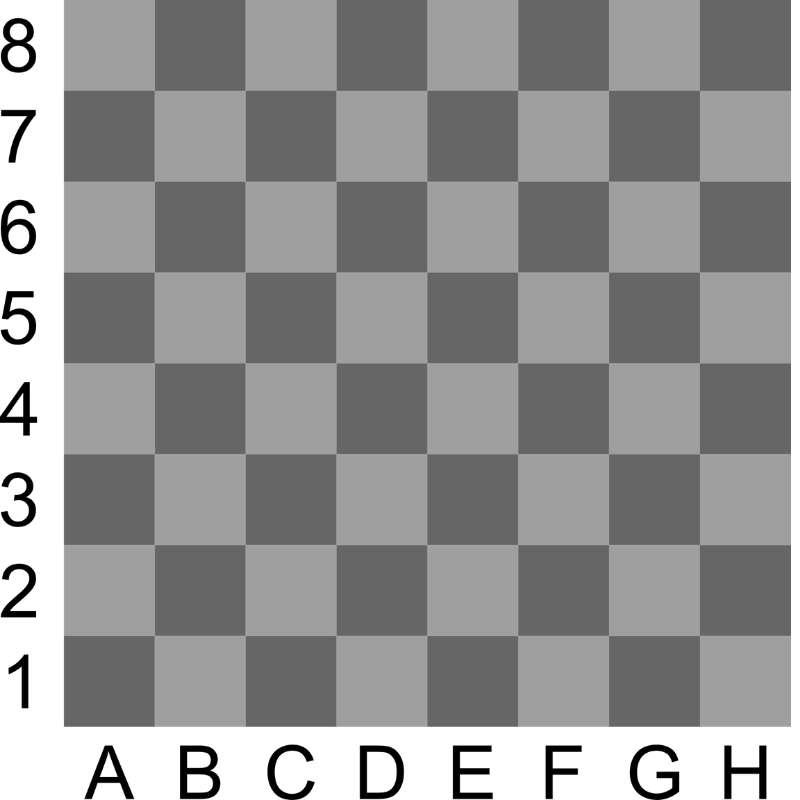
To name a square on the board, you simply combine the letter of that file to the number of the square.
To write the move that was played, all you do is write the first letter of the piece that moved followed by the square the same piece moved to.
For example, if you moved a King, you would write “K.”
Chess Notation Rules
There are only 7 rules to remember for writing descriptive Chess notation.
- Moves are written in order and are written with the number of that move followed by a period. The first move of the game is written “1.” The second move is “2.” And so on.
- If the piece captured another piece, a lowercase x is placed in between the letter of the piece and the square it moved to. If a Knight captured a piece on c3, it would be written as “NxC3.”
- Pawns don’t have a letter for the piece, it is simply blank. So if a pawn moves, you write the letter of the file the pawn is on. e4 is written for your e pawn moving to e4.
- If a pawn captures a piece, you write the letter of the file the pawn moved from and the name of the square it moved to with a lowercase x in between. 1. axb5 cxb5.
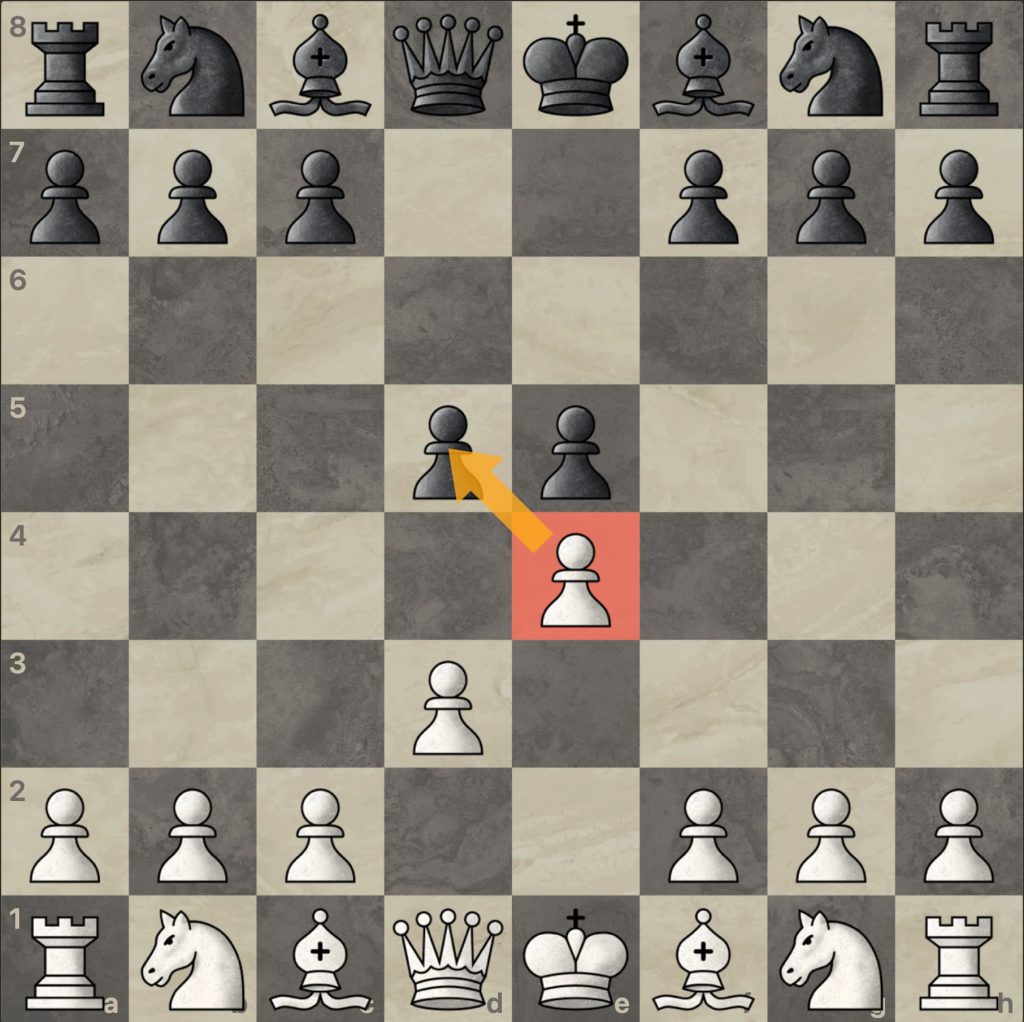 For example, White is going to capture Black’s d pawn.
For example, White is going to capture Black’s d pawn.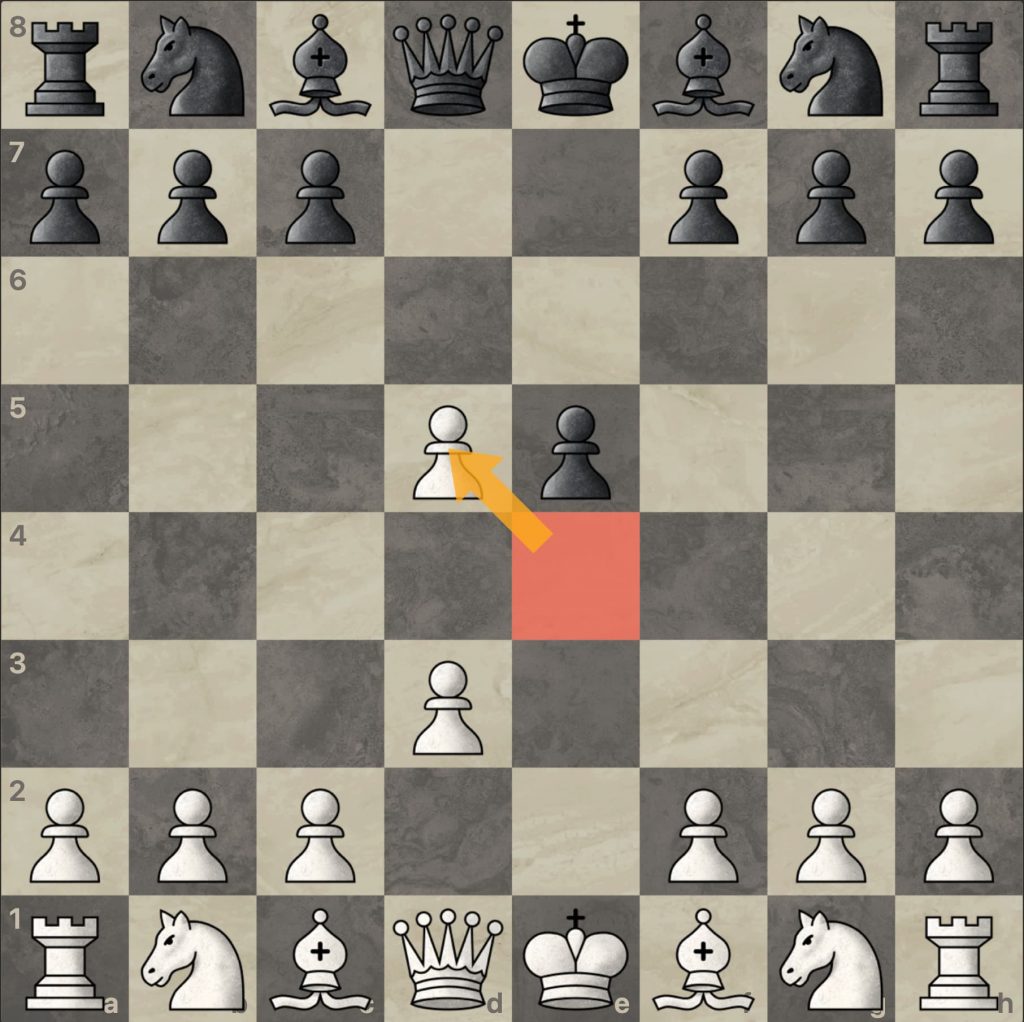
This move would be written as exd5. - If you use a pawn to capture a piece using the special En Passant rule, you would write the name of the square the pawn moved to and not the square the pawn moved from.
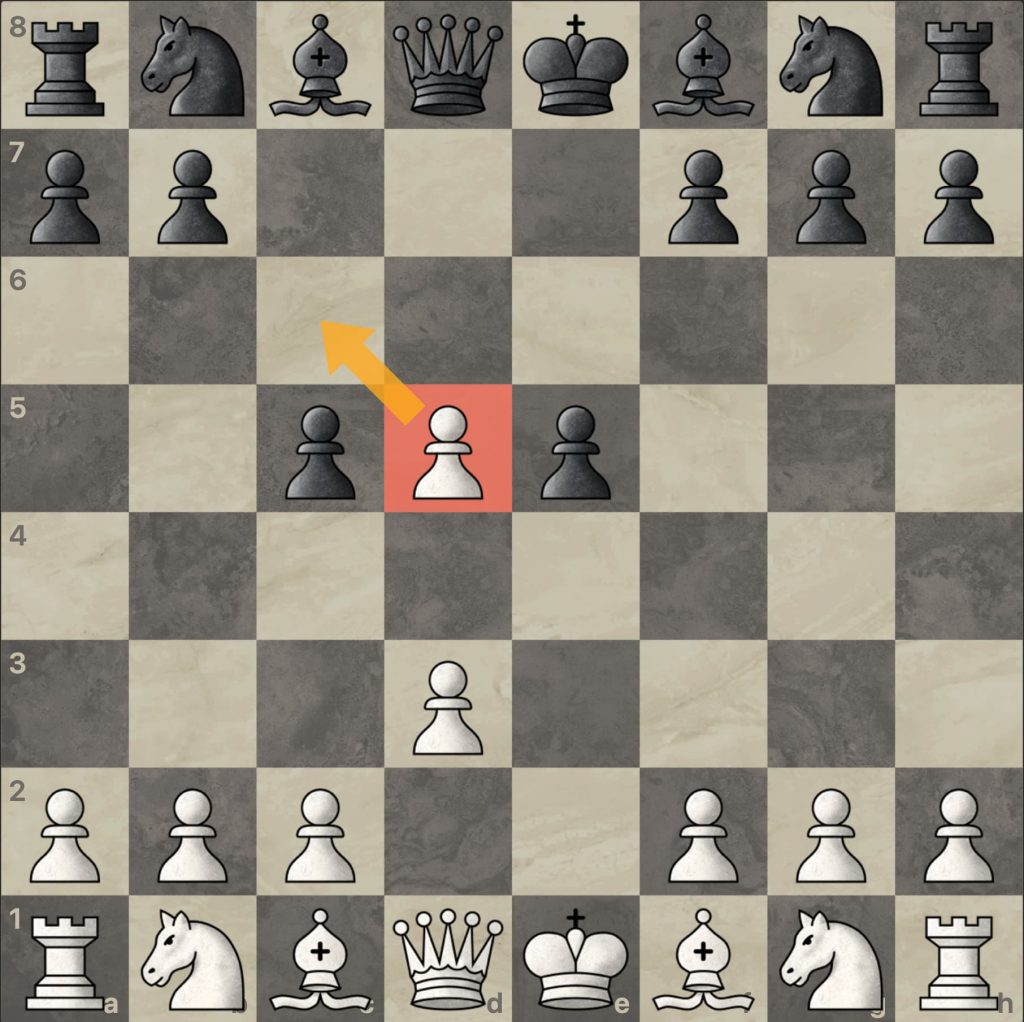 White’s d5 pawn is about to capture Black’s c5 pawn using En Passant.
White’s d5 pawn is about to capture Black’s c5 pawn using En Passant.
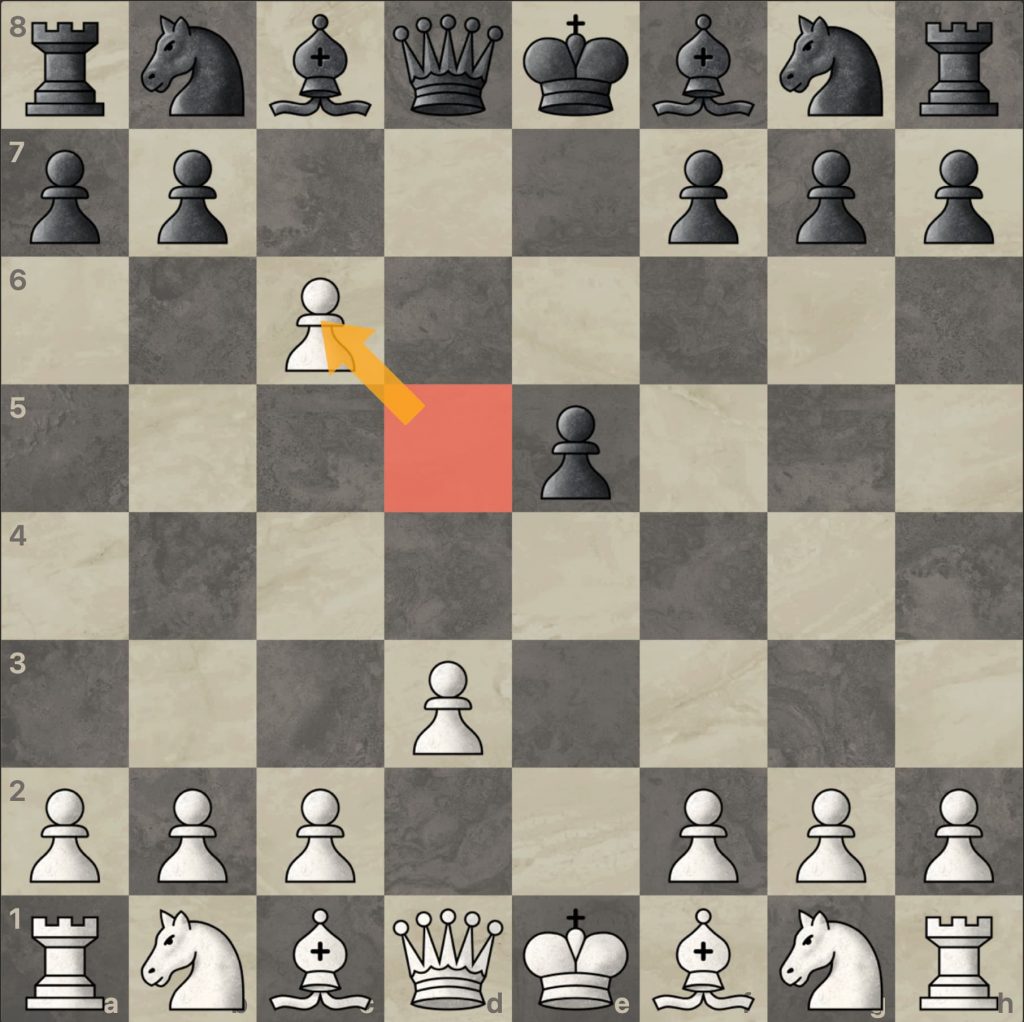
This move would be written as cx6. - If you have two pieces that are able to move to the same square, you would write the square the piece moved from which tells you which of the two pieces moved.
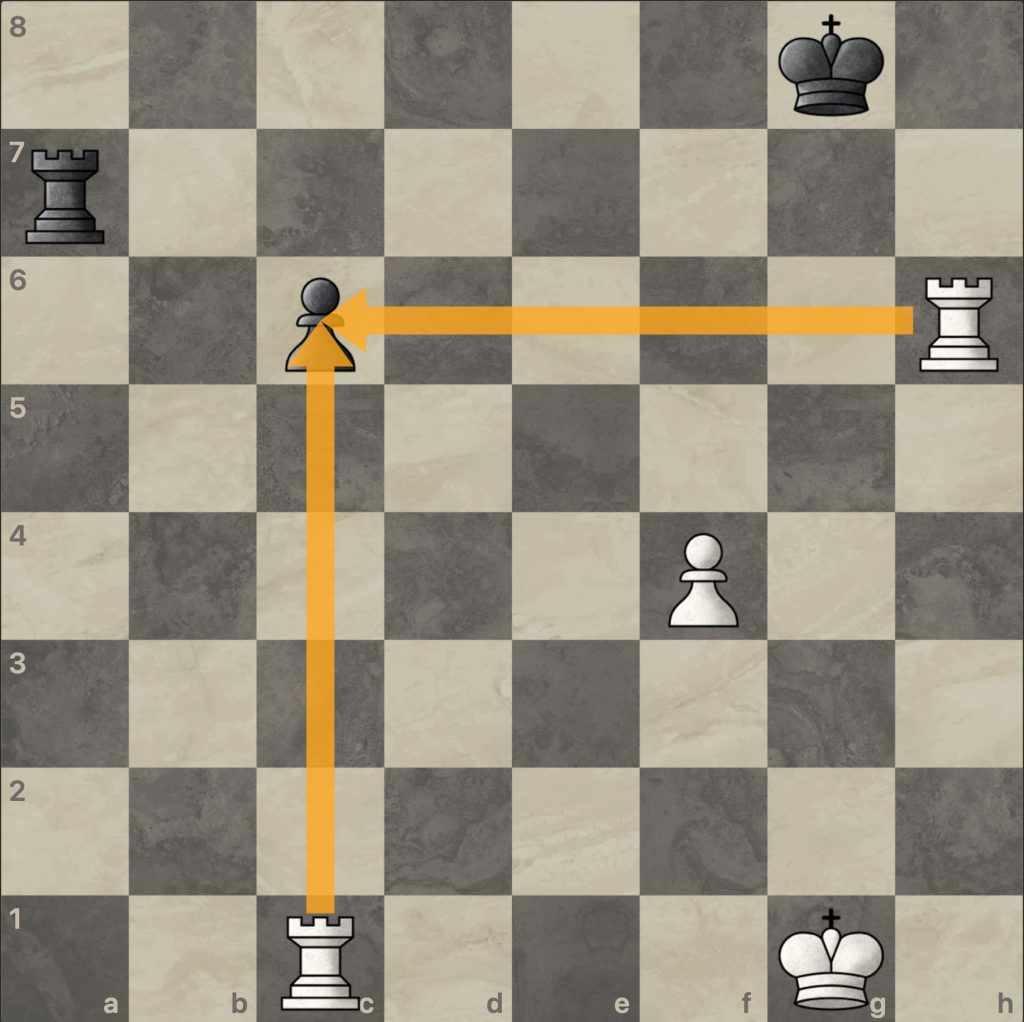
For example, White’s Rooks could both capture Black’s c pawn.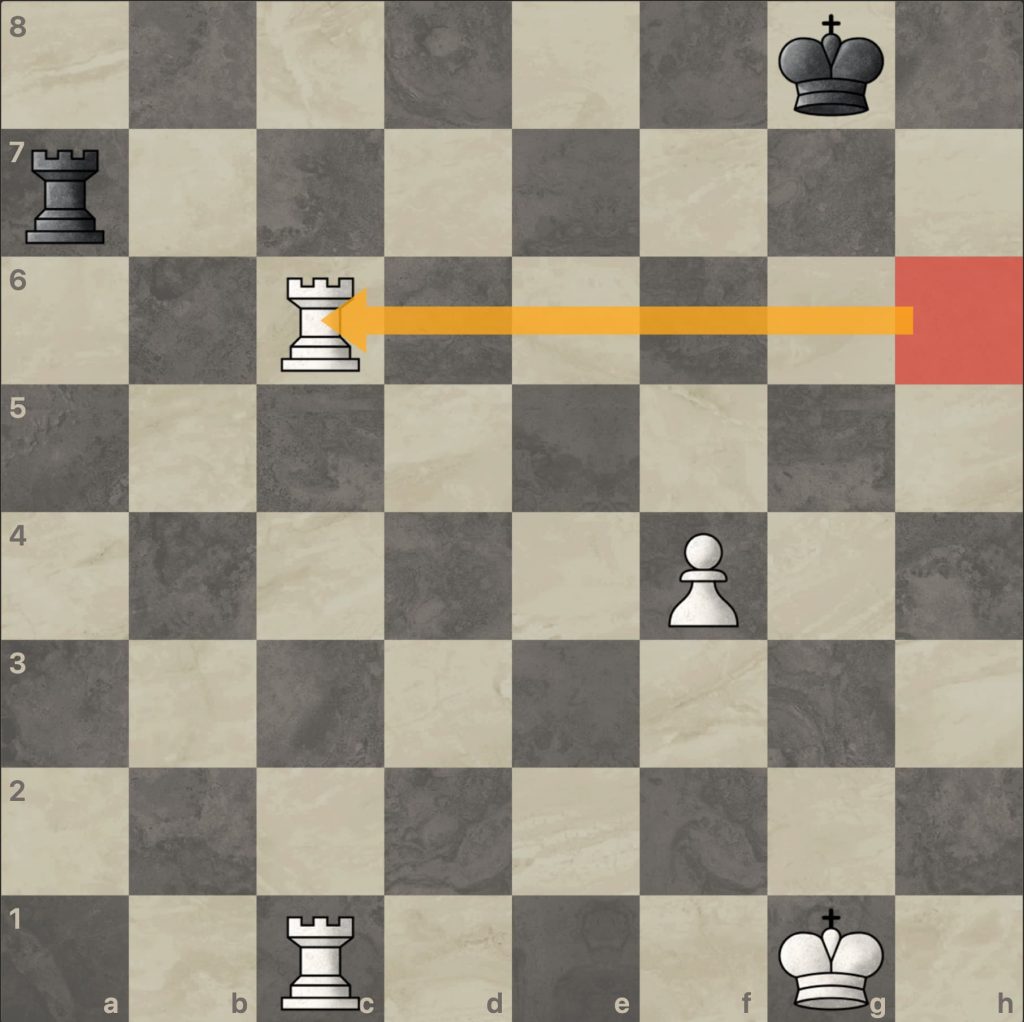 For this move, you would write, 9. Rhxe6 or you could write Rh6xe6 to be more specific. Both are valid.
For this move, you would write, 9. Rhxe6 or you could write Rh6xe6 to be more specific. Both are valid. - Last rule applies to castling. If you castle Kingside, you write 0-0.
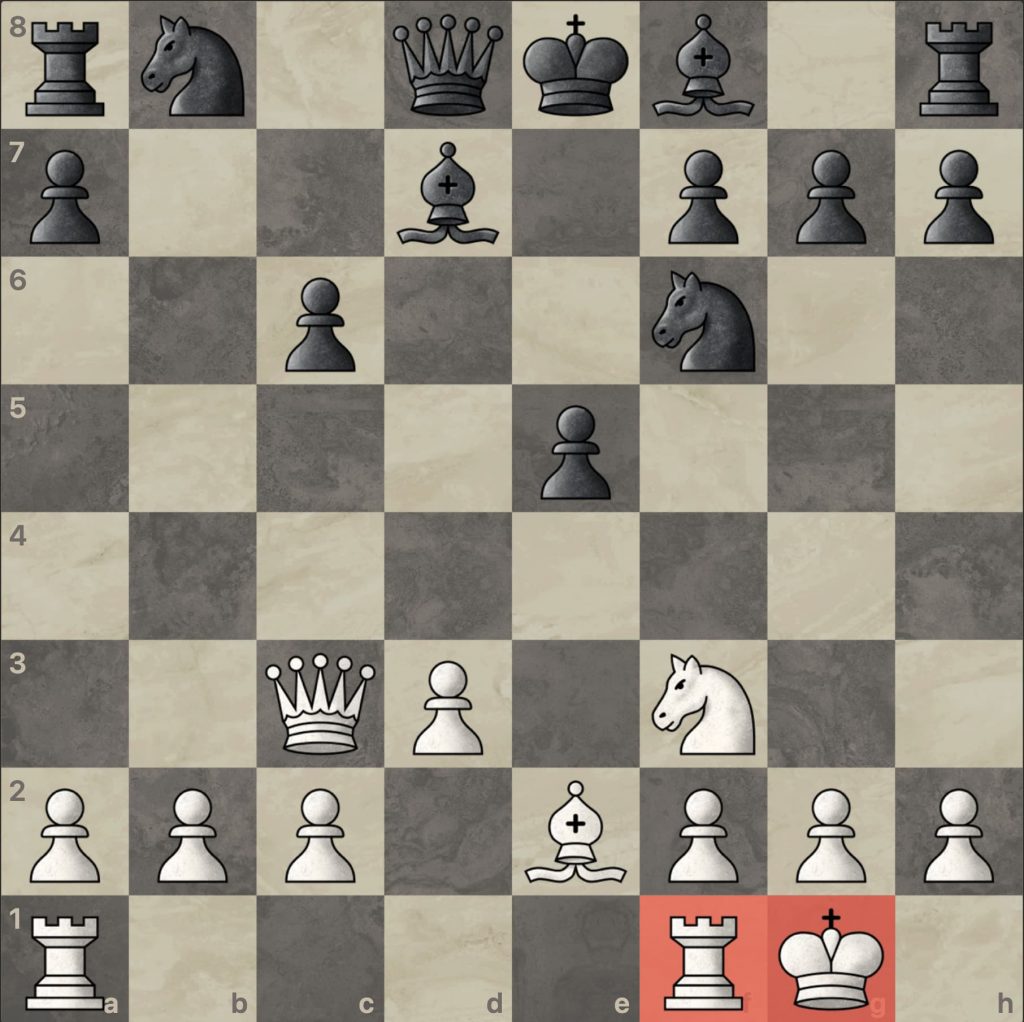
If you castle Queenside, you write 0-0-0.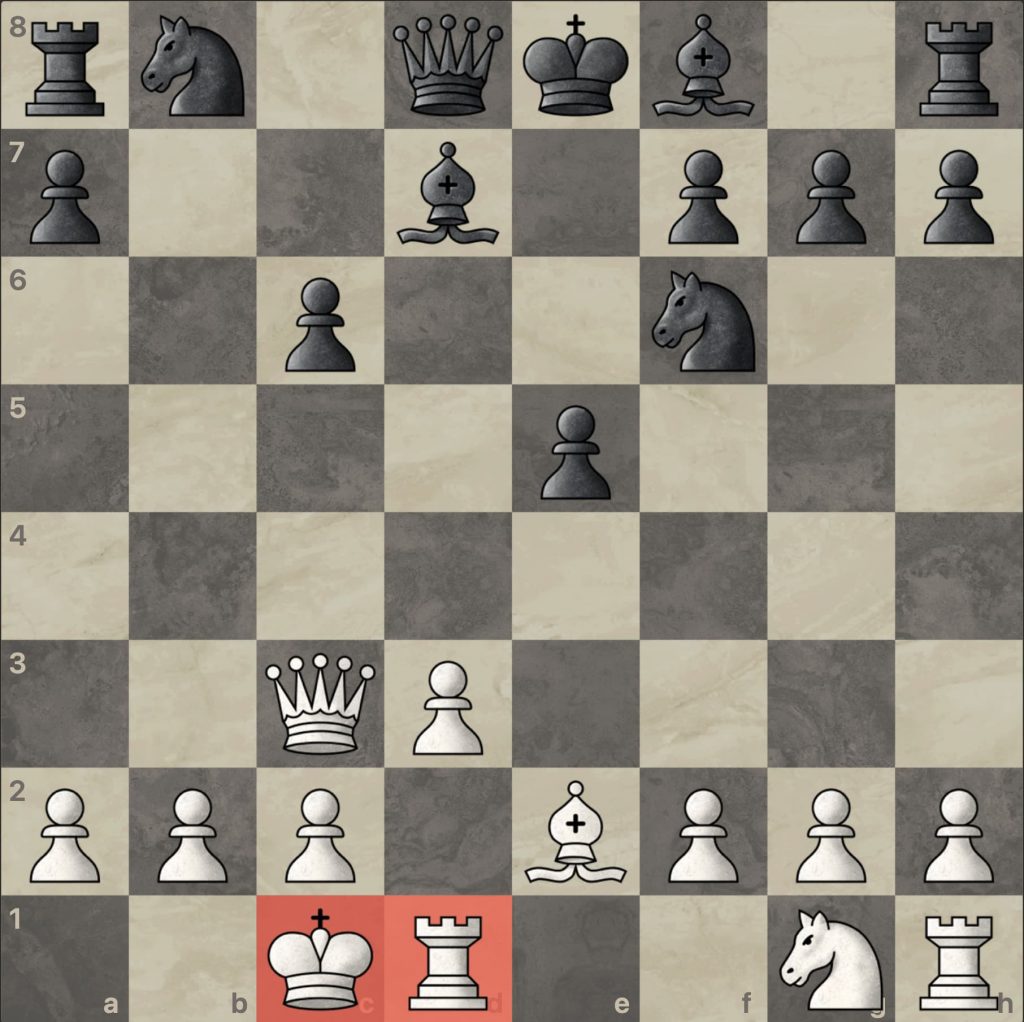
Special Chess Notation Rules
There are a couple special rules or exceptions that are written differently.
- Knights are written with an “N”.
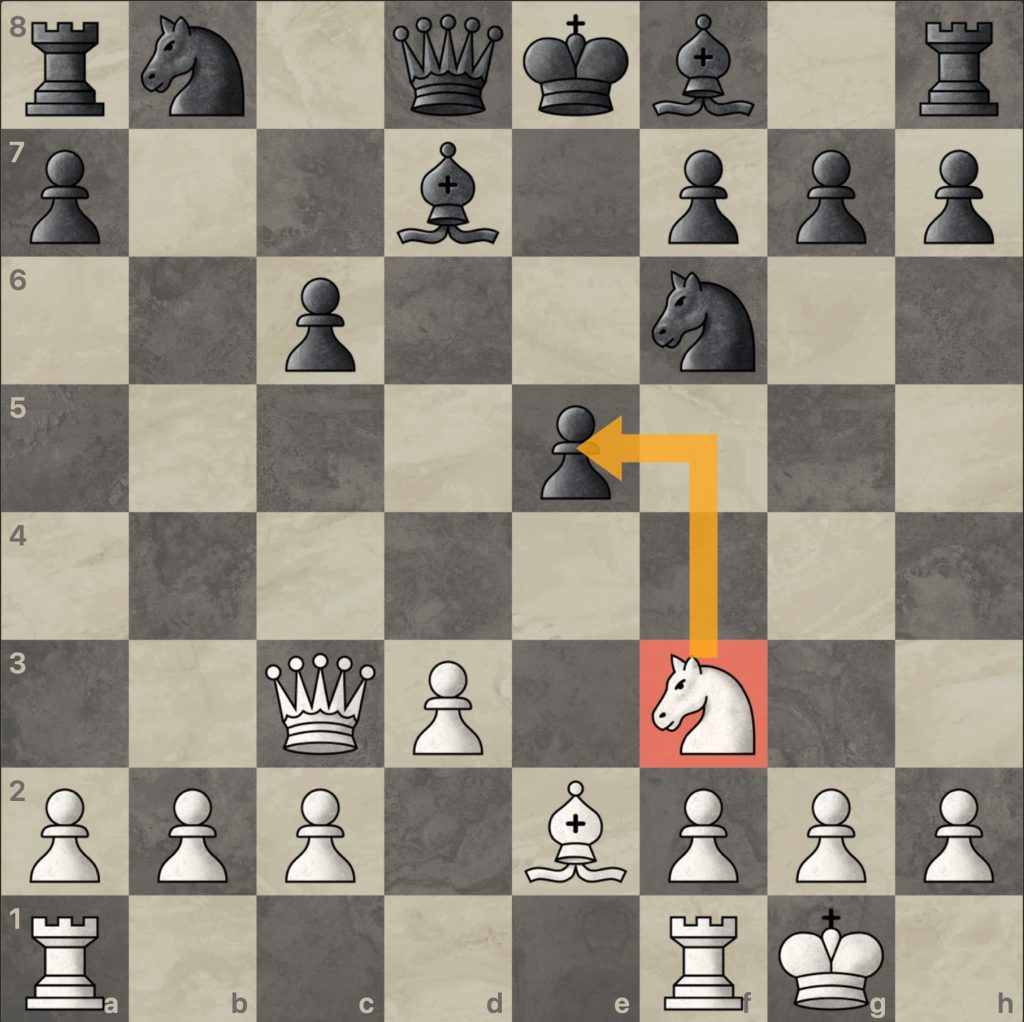
White is going to capture Black’s e pawn with a Knight.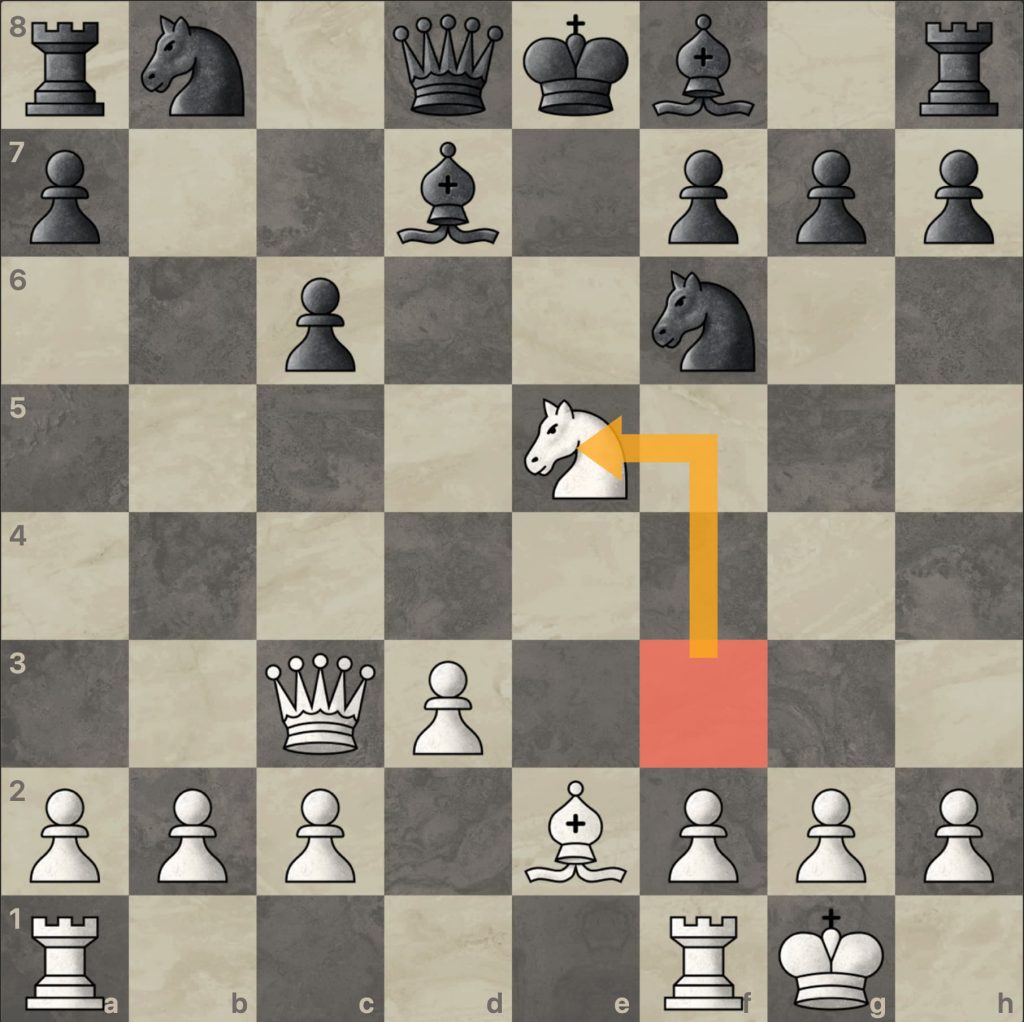
This move would be written as Nxe5.
Old Descriptive Chess Notation
Back in the earlier times of Chess, players described moves in a different way called Descriptive Notation.
For example, if you were wondering, What does, “rook to bishop four” mean in Chess?
Since there was two Bishops, Knights, and Rooks of course. So moves were described with piece being moved followed by whether it was on the Kingside and the Queen side. A move would be called, Rook to King’s Bishop Four, meaning the Rook moved to the 4th square on the Bishops file on the King side.
Final Thoughts
As you can tell, this way was slightly more confusing and thus this newer more simple way of describing moves was established.
As you practice, you’ll find yourself reading Chess moves without having to think about it.
I hope this guide on how to read Chess Algebraic notation helped you. If you liked this post, you may also want to read other Chess guides such as the guide on Chess Pieces and Checkmate Patterns.


